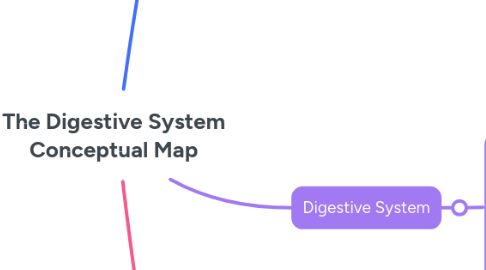
1. Nutrients and Homeostasis
1.1. Nutrients are important to maintain homeostasis in the body. Also, a balanced diet is important, but particularly during pre-teen and early teen years.
1.1.1. There are six types of nutrients that you need to consume to keep a good health, otherwise the body’s cells will stop working properly.
1.1.1.1. Water
1.1.1.1.1. It helps to digest food, maintains blood volume, regulates body temperature, and keeps a good skin appearance.
1.1.1.2. Carbohydrates
1.1.1.2.1. Are the main source of energy for the body. They can be simple like honey, and complex like grains.
1.1.1.3. Proteins
1.1.1.3.1. Are the raw materials used for the growth and repair of the body’s cells and tissues. It is composed of chains of amino acids.
1.1.1.4. Fat
1.1.1.4.1. It consists of long chains of fatty acids hooked to glycerol molecules. Fats are classified as either saturated or unsaturated.
1.1.1.5. Minerals
1.1.1.5.1. Are inorganic materials the body uses to carry out processes in cells and to build tissues. Common minerals are calcium, and sodium.
1.1.1.6. Vitamins
1.1.1.6.1. Are organic molecules that work with enzymes to regulate cell functions, and development.
2. Digestive System
2.1. It is a collection of organs that breaks down food into energy that can be used in cells.The major organs include the mouth, esophagus, stomach, pancreas, liver, gallbladder, etc.
2.1.1. Digestion begins in the mouth, continues in the stomach, and is completed in part of the small intestine.
2.1.1.1. Digestive system in the mouth
2.1.1.1.1. Mechanical digestion begins the moment you bite into the sandwich and start chewing. Chemical digestion, begins as you chew your food,the salivary glands release saliva that moistens the food.
2.1.1.2. Digestive system in the stomach
2.1.1.2.1. The stomach is a muscular sac that can stretch to nearly twice its original size and holds up to 2 liters of food.
2.1.1.3. Digestive system in the small intestine
2.1.1.3.1. The small intestine is a long, tube in which most digestion takes place. Smooth muscle contractions churn the food, and chemical digestion further breaks down the complex molecules.
3. Absorption of nutrients
3.1. Absorption is the process by which nutrients move out of the digestive organs into the circulatory and lymphatic systems.
3.1.1. The small intestine has three main structures: the lining, villi, and microvilli.
3.1.1.1. Lining
3.1.1.1.1. The lining of the small intestine is ridged and folded.
3.1.1.2. Villi
3.1.1.2.1. Are small fingerlike projections, covered with epithelial cells, that absorb nutrients.
3.1.1.3. Microvilli
3.1.1.3.1. Thousands of tiny projects found in the villi.
3.1.2. Nutrients are absorbed in the small intestine: the duodenum, the jejunum, and the ileum.
3.1.2.1. Duodenum
3.1.2.1.1. Simple sugars such as calcium and iron are absorbed by villi in the duodenum.
3.1.2.2. Jejunum
3.1.2.2.1. The villi in the jejunum absorbs glucose along with some amino acids, vitamins, and some water.
3.1.2.3. Ileum
3.1.2.3.1. The villi in the ileum absorbs fat-soluble vitamins, fatty acids, and cholesterol.
